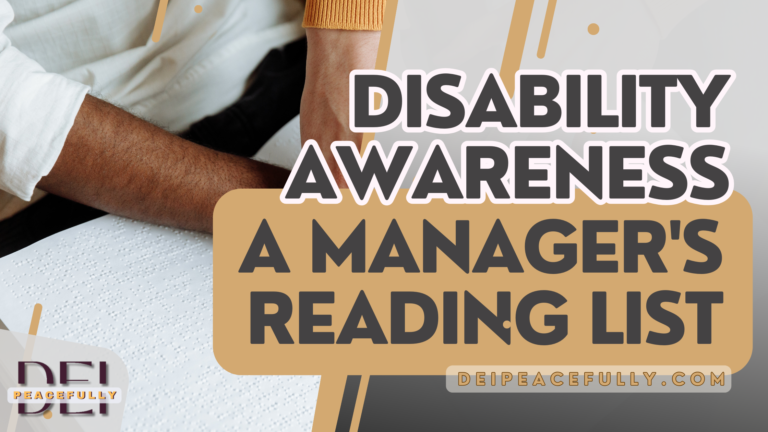Are you a compassionate leader committed to fostering an inclusive workplace? As we navigate the ever-evolving landscape of diversity and inclusion, it’s crucial to tune into the needs of our teams. One powerful tool in our journey toward a more equitable workplace is race awareness training. In this exploration, we’ll discuss the subtle signs that may indicate your employees could benefit from such training. Our goal is to approach this topic with empathy, understanding, and a commitment to empowering positive change.
- Limited Diversity in Leadership Roles: Take a moment to assess the diversity within your organisation’s leadership. If there’s a lack of representation from various racial backgrounds, it may be a sign that there’s room for improvement. A diverse leadership team sets the tone for an inclusive workplace, and race awareness training can help bridge this gap.
- Microaggressions in Everyday Interactions: Pay attention to the subtle interactions among your team members. Microaggressions, whether intentional or unintentional, can create an unwelcome atmosphere. If you notice instances of inappropriate comments or behaviours related to race, it’s a signal that there may be a need for increased awareness and understanding.
- Limited Cross-Cultural Collaboration: Examine the dynamics of collaboration within your teams. If there’s a tendency for employees to stick to their comfort zones and collaborate primarily with colleagues from similar backgrounds, it may indicate a lack of cross-cultural awareness. Race awareness training can encourage a more inclusive and collaborative environment.
- Unequal Access to Opportunities: Investigate whether there’s an equitable distribution of opportunities, such as promotions, challenging projects, or professional development, across your diverse team. If certain groups consistently have limited access to these opportunities, it’s time to address potential systemic biases through awareness training.
- Unacknowledged Cultural Celebrations: Reflect on how your organisation acknowledges and celebrates cultural diversity. If significant cultural events or heritage months go unnoticed, it may indicate a lack of awareness and appreciation for the rich tapestry of backgrounds within your team. Race awareness training can help promote a culture that values and celebrates diversity.
- Low Employee Engagement Scores: Scrutinize your employee engagement survey results, paying special attention to responses related to diversity and inclusion. If employees from different racial backgrounds consistently report lower satisfaction levels or feelings of exclusion, it’s a clear indicator that targeted awareness training may be beneficial.
- Inadequate Reporting Mechanisms for Bias Incidents: Assess the existing systems in place for reporting incidents of bias or discrimination. If employees feel hesitant to report such incidents or if the reporting mechanisms are unclear, it suggests a need for increased awareness around addressing and preventing bias. Training can help establish a safe and transparent reporting culture.
- Lack of Open Conversations on Race: Consider the nature of conversations within your organisation. If there’s a noticeable absence of open discussions about race, diversity, and inclusion, it may indicate discomfort or hesitancy around the topic. Race awareness training can provide the tools to facilitate constructive and respectful conversations.
- Disparities in Mentorship and Sponsorship: Evaluate the mentorship and sponsorship programs within your organisation. If there are disparities in access to mentors or sponsors among different racial groups, it’s a signal that there may be hidden barriers hindering career development. Awareness training can help dismantle these barriers.
- Insensitive Language in Internal Communications: Scrutinize internal communications, including emails, newsletters, and company-wide announcements. If there’s the unintentional use of language that may be perceived as insensitive or exclusive, it underscores the need for increased awareness around inclusive communication.
- Unaddressed Stereotyping and Prejudice: Keep an eye out for instances of stereotyping or prejudice that may go unaddressed within the workplace. If employees witness such behaviours but feel unsure about addressing them, it highlights the importance of cultivating a culture where everyone feels empowered to challenge stereotypes.
- Employee Resource Groups Lack Visibility: If your organisation has employee resource groups (ERGs) focused on diversity, examine their visibility and impact. If these groups are not actively engaged or lack visibility, it signals an opportunity to enhance the effectiveness of ERGs through targeted awareness training.
Empowering Solutions:
Now that we’ve identified potential signs that your team may benefit from race awareness training, let’s explore empowering solutions to address these challenges:
- Assessment and Acknowledgment: Begin with an honest assessment of the current state of diversity and inclusion within your organization. Acknowledge any areas that may need improvement and communicate this commitment transparently to your team.
- Engage Leadership: Ensure that leadership is actively engaged in promoting diversity and inclusion. Leaders who champion these values set a powerful example for the entire organisation. Encourage leadership to participate in awareness training to lead by example.
- Customised Training Programs: Collaborate with experts to design customized race awareness training programs tailored to the specific needs and challenges within your organisation. Generic training may not be as effective as a targeted approach that addresses your unique workplace dynamics.
- Encourage Open Dialogue: Foster an environment where open dialogue on race is not only accepted but encouraged. Create safe spaces for employees to share their experiences, ask questions, and engage in constructive conversations. This openness promotes a culture of mutual understanding.
- Review and Revise Policies: Regularly review and revise organisational policies to ensure they align with diversity and inclusion goals. This includes policies related to recruitment, promotions, and professional development. Address any biases embedded in policies that may inadvertently perpetuate disparities.
- Invest in ERGs: Invest time and resources in supporting and promoting employee resource groups. These groups play a vital role in fostering a sense of community and providing valuable insights into the experiences of different racial groups. Amplify their impact through targeted initiatives.
- Continuous Learning: Emphasise the importance of continuous learning and development for all employees. Incorporate race awareness training into ongoing professional development programs. This approach ensures that awareness becomes an integral part of the organisational culture.
- Amplify Diverse Voices: Actively seek out and amplify diverse voices within your organisation. Provide opportunities for employees from different racial backgrounds to take on leadership roles, share their perspectives, and contribute to decision-making processes.
- Create Mentorship Opportunities: Establish mentorship programs that actively promote diversity. Encourage leaders to become mentors to individuals from underrepresented groups. Mentorship fosters professional growth and creates a more inclusive pathway for career development.
- Transparent Reporting Systems: Enhance reporting systems for bias incidents to make them more transparent and accessible. Communicate the procedures for reporting and addressing bias, ensuring that employees feel confident in utilising these channels without fear of reprisal.
Conclusion:
Navigating the need for race awareness training requires a compassionate and proactive approach. By tuning into the subtle signs within your organisation, acknowledging areas for improvement, and implementing targeted solutions, you can pave the way for a more inclusive and empowered workplace. Embrace this journey with a commitment to ongoing learning, understanding, and fostering an environment where every individual feels valued, respected, and heard. Perhaps start with our reading list if you aren’t ready to enrol on a course yet.
*this post includes affiliate links



